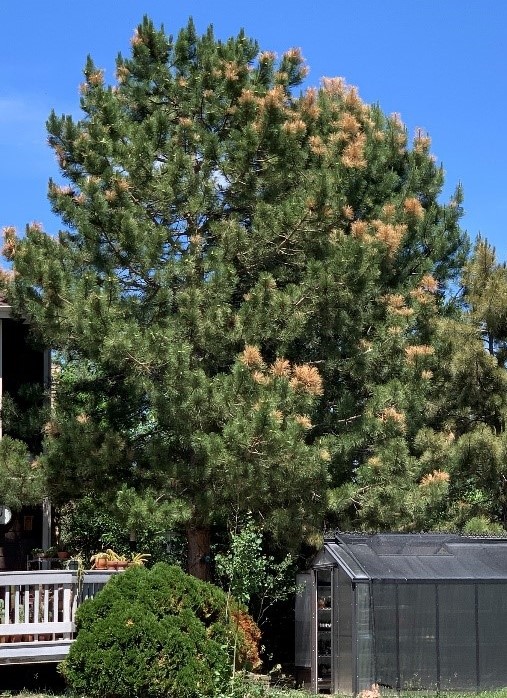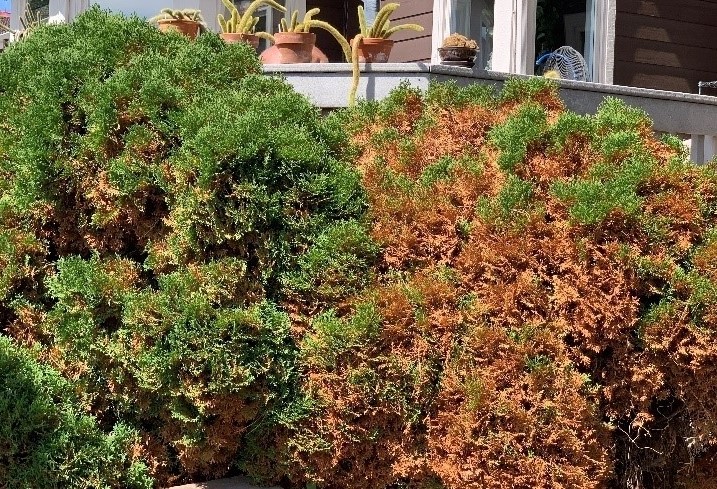Is Your Evergreen Brown? No Need to Frown
- 2020-07-09
- By mkirk
- Posted in The Garden Buzz
By Kirsten Saunders, Apprentice Master Gardener
Last winter wasn’t so hard on me. Most days were bright and we rarely had to pull out our trusty snowblower. Last winter, however, was terrible for my evergreens.
First, temperatures plummeted over 50 degrees in 24 hours in mid-October, shocking the evergreens before they were hardened off for the winter. Then came a dry, windy winter that stripped needed moisture from the needles and caused winter desiccation. And then, just when the evergreens thought they were safe, there was another shocking drop in temperatures in mid-April, with two days of record lows.
The result: many evergreens are in distress–brown needles, brown tops, brown streaking. Some even have bare branches. And we aren’t just talking pines and junipers here. Euonymus, pyracantha, Oregon grape, and holly have turned brown as well. All in all, they are a sickly lot, but the good news is that most of them will recover given water and time.
A mature tree needs ten gallons of water every two weeks per inch of tree diameter; e.g., a tree with a four-inch trunk needs 40 gallons of water. In Colorado, trees and shrubs need water regularly in the winter too, at midday when the temperatures are above 40 degrees and the ground is not frozen. A regular watering schedule will help your evergreens recover and also strengthen them for future shocks.
Many people are asking whether to prune out the brown or dead branches. Unless the branch is brittle and snaps immediately when bent, wait until this fall or even next year to prune.
Be aware that other things can cause browning and needle dropping. Some evergreens routinely replace all their needles every few years. Others can be subject to harmful insects and diseases. Look for white resin, black spots where the branches connect to the trunk, holes in the trunk or the presence of insects. These may all indicate a larger problem. Often a diseased tree will turn brown rapidly. Sometimes you will even see marked damage in a week. If this happens, consult a certified arborist quickly, as your evergreen may need prompt treatment to survive.
but they are recovering with regular watering.
Right: New needle bundles forming.
Photos: Kirsten Saunders
But most of us can relax. If your evergreen has been getting greener, or if you see new needle bundles forming, then it is likely your tree will recover with regular watering.
Read more about fall and winter watering here.
Read more about selecting and caring for evergreens here.
Read more about fall and winter gardening here.
Find a certified arborist here.
Horticulture Resources
- Garden Buzz Archives
- CSU Extension Resources
- Colorado Master Gardener Program
- Foothills to Plains Native Plant Master Program
- Native Bee Watch Community Science Program
- The Co-Hort Blog
- PlantTalk Colorado
- Soil Testing
- Plant Select
- Emerald Ash Borer
- Japanese Beetle
- Colorado State Forest Service
- Ask an Expert





